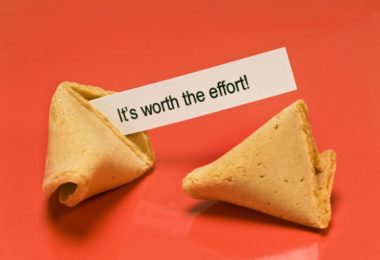
A small business that you can call their own is a dream of many..Although, it takes a lot of initial work, such as planning, analyzing, strategizing, finance, etc. to get it running, you can make your dream a reality just by starting a retail business. You just need to figure out what you want to do and set goals accordingly. Retail is one of the easiest businesses to open and run. Most people dream big and often end up struggling and on the verge of closing stores for not able to handle the operations. Therefore, it is always good to try retail first.
That being said, it is much harder than it sounds – starting a business. You should know the basics, get educated about the niche, and learn a lot practically before you build your small empire. We believe having experience in the retail industry could make your goals more achievable and streamlined.
Outlined below are the general steps required to start a retail business. With knowledge and confidence, opening a retail store with the help of this guide.
Steps to Start a Retail Business
Step 1: What Do You Want To Sell?
You have to pick the right products and the top three factors that you need to consider while deciding your products are knowledge or interest, the demand for the product, and margin.
You should have a genuine interest in the product, or have some kind of basic knowledge. You don’t wish to make it harder for you by trying to sell something that you don’t like or that bores you very much. Knowing your product will help you make the right business choices, such as finding the right suppliers, deciding the price, packaging, and understanding the target market.
To pick a product, you can consider your hobbies, or use your professional knowledge or skill or just go and find a niche that you think you can do better in serving.
That being said, the demand and margin of the product are very crucial. You may love a particular product but if it is not liked by the people, you probably should not sell it. See if people are buying your chosen product on Amazon and eBay. Read customer reviews and feedbacks of the product. Use figures, facts, and statistics from retail trade reports to measure the demand for the product.
Additionally, figure out how much the product would cost to produce or purchase, and how much can you sell it for. To get an idea, talk to suppliers and wholesalers and spend time in retail trade fairs and shows.
Step 2: Write A Business Plan
Creating a business plan should be your first step towards establishing a business. A business plan will be the blueprint of your start-up that you can use as a measuring point throughout your progress. It allows you to consider business from different angles and help you focus on all areas of business operations and administration. It also helps you with research and planning.
If you are planning to take up a bank loan for your retail store, a traditional and strong business plan will help you acquire it faster. A Retail business plan may take from one to three weeks to complete, depending upon your product. Do not skip this step because a well-written business plan has a direct correlation with the success of a retail business.
Okay, so to make it easier, we have listed the key areas of business that you must address in your plan:
- Competition and Analysis
- Customer Demand and Experience
- Business Mission, Vision, and Policies
- Financial Plan (funds required, operational expenses, financial goals, financial projections etc.)
- Management plan (number of employees required, working hours, management rules and policies, business development strategy, growth goals, etc.)
- Employee plan (salaries, number of employees, roles, how to recruit and why to recruit)
- Recurring vs one-time expenses
- Location
- Marketing and advertising strategies
Step 3: Choose A Legal Structure For Your Business
You have to make your business legal on papers and give it a proper legal structure. Choosing the structure is one of the important decisions you will be making. And this decision should be made before you start your business because although a structure can be changed at a later date, it is an expensive and complex process.
The most common structure for small retail businesses is an LLC. The Limited Liability Company is simple to form and gives the owner good tax benefits. Other structures include the Sole Proprietorship, Partnership, and S Corp. Each has various pros and cons. If you want to know more about each structure and get legal advice, it is best to hire an advocate for your business. An advocate will help you in several places during the incorporation of your business.
Incorporating a business will not take you long, and the process is not complex either. So, you have to consult your state business administrative authorities to know the application process.
Step 4: Choose Your Business Name
The name of the business is its biggest identification mark through which your customers will recognize you. You have to choose a name that can communicate who you are quick with the right audience. With Google searches and social media becoming truncated each day, you should be careful in choosing a name that easily shows in organic search results. Your name should be SEO friendly too. Your name should not be a clever word; rather it should be easy to explain and related to your business.
Your business name should clearly sell your products. Try to include at least two words in your name. For instance, if you name your business Myntra, no one would know what you are selling. A single worded name cannot be a benefit unless you are a superstar already. So, choose something like, ‘MyntraClothing’ or ‘Myntra Tools’ or ‘Myntra Hair Essentials’. You can also include your family name, especially in smaller communities,as it adds value to your business.
Step 5: Decide Your Channel And Choose Store Location
Picking the right channel to sell your products is a challenge in itself today, especially with the internet bringing in evolution for businesses. It is also an art and a science. You should know whether your products could be sold better online better or through a brick or mortar store, or both. Your marketing strategies should also coincide with the choice of your channel.
Today, all customers expect omnipresence from their sellers, as in engage, and buy products and services in multiple ways. There is social media, a website, e-commerce platform and of course physical store for channels. You have to decide early on your journey what channels you will use to engage your customers and create a strong brand identity.
While you consider this, you should simultaneously search for the perfect location for your retail store. The location you choose will have a major impact on your shop’s operation, right from the price to the number of customers visiting.
The location can also be the differentiator between business success and failure. Your budget should also dictate your location so that you do not run the business at a loss. When it comes to selecting the location, target in and around the crowd, and consider the cost of the area, the competition,and the contract details. You can either rent the space or lease it. Buying should not be an option unless you are a veteran in the business.
Step 6: Obtain Licenses And Other Documents For Your Business
You will have to obtain a few other licenses and permits to run the business in your state legally. You have to file an EIN to identify your business. An EIN is required for filing tax and opening a bank account. It is also required if you have employees. You can obtain an EIN from your state’s IRS website.
You should also find out from your state or local corporation authorities if any other licenses or permits are required to run a retail store. For instance, there might be zoning permits, food, safety, and hygiene licenses, and so many other laws that govern retail businesses that most of us are unaware of. You will need the help of your lawyer and an accountant to understand the legal terms.
Open a separate bank account for transacting business transactions, and buy limited liability insurance coverage for protecting your personal assets from legal issues and claims. Insurance will help your business and your personal assets in several ways. Call an expert insurance advisor and find out the pros of purchasing a comprehensive business liability insurance policy. Based on the nature of your business, you may also have to buy a worker compensation insurance and fire insurance policy.
Step 7: Define Your Customer Experience
Many retail businesses fail because they skip this step. It is a very important thing to do in this millennial world. Most people prefer buying or shopping from a physical store rather than online. However, they also look for a completely new experience when they visit the online retail store. In short, you have to successfully run your business both in a physical store and online.
Most importantly, your focus should all the time remain on customer experience, more than designing and decorating your retail store. Of course, ambiance and look matter, but not more than the value that your products give. Customer experience goes beyond customer service. It is defined as the complete package your product offers to each individual customer.
The product type, the store design, the price, the product lines, the after-sale service, the communication type, speed and quality, your employee behaviour with customer, the store position and design, the navigation of your online portal, the product details mentioned on the website, the packaging, and the delivery are together defined as customer experience.
Step 8: Network And Establish Relationship With Suppliers
All successful retail business owners have great vendor relationship. Offering the right product, at the right place and time is the key to enhanced customer experience and of course, business growth. In order to offer everything right, you definitely need those key resources. Therefore, you should invest time and effort to locate places to buy your products at wholesale.
You have to look for vendors with whom you can collaborate and establish a long-term relationship. A good vendor relationship will bring many benefits on to your table, apart from a quality product. That’s why you must consider factors like co-op funds, payment structure, marketing support, returns and refunds, handling problems, and dating on the purchase when sorting your vendors.
You should also establish a great rapport with your vendors; and in order to establish one, you need to improve your communication skills. You may also want to fine-tune your problem-solving skills, leadership skills, and cognitive skills.
Step 9: Define Your Store Policies
Problems may come unexpectedly and therefore, you should be ready with policies and procedures. These policies must be adhered to by all the staff and the management of the store when addressing special situations and performing regular day-to-day operations. Just like organizational culture and ethics, a retail store should also define and work on policies and procedures to avoid mistakes, provide customer satisfaction, and implement strong managerial practices.
Your employees and staffs should be fluent with the practices and procedures. So, train them rigorously and adequately.
Step 10: Advertise And Market Your Business
This is the last step in the process guide of the retail business start-up. Create a marketing and branding plan and explore different promotional ideas. Creating a brand identity means uncovering your products’ key differentiators from your competitors’. Use all mediums of marketing and advertising, including online, offline, and traditional. Social media and Ad campaigns are two great marketing tactics that retail businesses should adopt.
Before you open your store officially to the public, conduct a soft opening. Most successful retail stores follow this. It makes more sense and gathers momentum for start-ups. It also minimizes the expenses and risks of negative publicity. It finally makes your staff and you ready for the grand opening.
That’s all you need to know to start your retail business. You will learn the bigger things as you run your operations every day. If you have any doubts, please raise them in the comments below. We will answer them soon.




